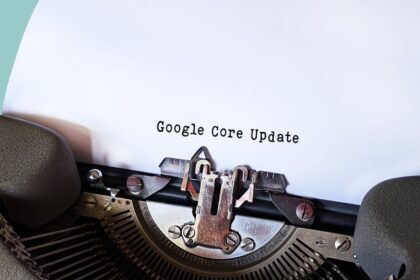The Paradigm Shift: From Desktop-First to Mobile-First Indexing
The evolution of search engine ranking algorithms is a direct reflection of human behavior. For years, the digital world was viewed through the lens of a desktop or laptop monitor. Websites were designed for wide screens, mouse pointers, and stable, high-speed internet connections. Search engine crawlers, like Googlebot, primarily simulated this desktop user to crawl, render, and index the web. This was the desktop-first era. However, the meteoric rise of the smartphone fundamentally and irrevocably altered this landscape. Users began searching, browsing, and purchasing on small, touch-screen devices, often while on the move with variable network quality. Recognizing this seismic shift, Google initiated a change that would redefine on-page SEO: Mobile-First Indexing.
To comprehend the role of mobile-friendliness in on-page ranking, one must first grasp the mechanics and implications of mobile-first indexing. It is not a separate index for mobile results; rather, it is a fundamental change in how Google builds its single, unified index of the web. Under this model, Google predominantly uses the mobile version of a page for indexing and ranking. The Googlebot crawler that visits a website now primarily uses a smartphone user-agent. It effectively “sees” the website as a mobile user would. If a website has a separate desktop version (e.g., www.example.com) and a mobile version (e.g., m.example.com), Google will use the m.example.com version for indexing. If a site uses responsive web design, Googlebot will crawl the same URL but render the page with a mobile viewport to assess the content and layout.
This has profound consequences for on-page optimization. Previously, SEO professionals could afford to have a “lite” mobile version, perhaps with truncated content, hidden navigation elements, or fewer internal links, believing the “full” desktop version was what truly mattered for ranking. Mobile-first indexing completely inverts this logic. Now, the mobile version is the primary source of truth for Google. Any content, structured data, link, or on-page element that is present on the desktop version but absent from the mobile version is effectively invisible to Google for indexing and ranking purposes. This concept is known as content parity.
Achieving content parity is a critical, non-negotiable aspect of modern on-page SEO. It extends beyond just the visible text on the page. Key areas that demand parity include:
- Primary Content: The main body of text, articles, product descriptions, and user-generated content must be identical. Hiding significant blocks of text on mobile behind “read more” tabs that require a user interaction to load can be problematic if not implemented correctly, as Googlebot may not “click” to reveal the content and therefore fail to index it.
- Headings and Metadata: All heading tags (H1, H2, H3, etc.), title tags, and meta descriptions must be consistent across both versions. These elements are powerful on-page signals for relevance and context, and any discrepancy means the signals from the desktop version are lost.
- Image and Video Content: All images, complete with their
alttext, and all embedded videos must be present on the mobile version. Optimizing these assets for mobile is crucial, but removing them entirely is a critical error under mobile-first indexing. - Structured Data: Schema markup (e.g., for products, reviews, recipes, articles) is vital for helping Google understand the content and for qualifying for rich snippets in the search results. This structured data must be present and identical on the mobile version of the page. Many sites historically only included this markup on their desktop templates.
- Internal and External Links: The entire internal linking structure, which distributes authority (PageRank) and provides contextual pathways for crawlers, must be fully represented on the mobile version. Missing navigation menus or footer links on mobile can severely hinder crawlability and the flow of link equity throughout the site.
Failure to maintain parity means a site is essentially presenting a weaker, less complete version of itself to Google for ranking consideration. This directly and negatively impacts its ability to rank for its target queries, regardless of how robust the desktop experience might be. The desktop version becomes a secondary consideration, primarily serving desktop users but holding little to no weight in the primary indexing and ranking processes.
Core Web Vitals: Quantifying the Mobile User Experience
While mobile-first indexing dictates what Google looks at (the mobile version), the Page Experience update, with Core Web Vitals (CWV) at its heart, dictates how Google evaluates the quality of that version. Mobile-friendliness is no longer a simple binary check; it is a nuanced, measurable spectrum of user experience quality. Core Web Vitals are a set of specific, user-centric metrics that measure real-world user experience for loading performance, interactivity, and visual stability. While they apply to both desktop and mobile, their impact and the difficulty of optimizing for them are significantly more pronounced on mobile devices due to inherent limitations like smaller CPUs, less RAM, and less reliable network connections. These metrics are direct, albeit weighted, on-page ranking factors.
1. Largest Contentful Paint (LCP): Measuring Loading Performance
Largest Contentful Paint measures the time it takes for the largest image or text block visible within the viewport to become visible to the user. In simple terms, it’s a proxy for perceived loading speed. A user visiting a mobile page wants to see the main content quickly. A slow LCP leads to frustration and a high probability of the user abandoning the page. For a good user experience, Google recommends an LCP of 2.5 seconds or less.
On mobile, several factors conspire to degrade LCP performance:
- Slower Network Speeds: 3G, 4G, and even patchy 5G connections have higher latency and lower bandwidth than typical broadband, slowing down the download of all resources.
- Unoptimized Images: This is the most common culprit. A large, high-resolution hero image designed for a 27-inch desktop monitor being served to a 6-inch smartphone screen is a massive waste of bandwidth and processing power. It dramatically inflates the LCP time.
- Render-Blocking Resources: CSS and JavaScript files that must be downloaded and parsed before the browser can render the main content of the page will delay the LCP. On a mobile CPU, parsing and executing heavy JavaScript is a much slower process.
- Slow Server Response Time (TTFB): Time to First Byte measures how long it takes for the server to send back the first byte of data after a request. A slow TTFB, caused by an underpowered server, inefficient database queries, or lack of caching, creates a bottleneck before the page even begins to load, guaranteeing a poor LCP.
Optimizing mobile LCP is a critical on-page task. It involves a multi-pronged approach: optimizing images by using modern formats (like WebP or AVIF), compressing them, and using responsive images with the element or the srcset attribute; minifying and deferring non-critical CSS and JavaScript; leveraging browser caching; and using a Content Delivery Network (CDN) to reduce server response times for users around the globe.
2. First Input Delay (FID) and Interaction to Next Paint (INP): Measuring Interactivity
First Input Delay measures the time from when a user first interacts with a page (e.g., taps a button or a link) to the time when the browser is actually able to begin processing that interaction. A high FID results in a page that feels sluggish and unresponsive. The user taps, and nothing happens for a noticeable moment. Google recommends an FID of 100 milliseconds or less.
However, FID only measures the delay of the first input. To provide a more comprehensive measure of overall page responsiveness, Google has introduced Interaction to Next Paint (INP) as a new Core Web Vital, set to replace FID in March 2024. INP observes the latency of all user interactions throughout the lifecycle of a page and reports a single value that represents the worst interaction latency (or close to it). A good INP is considered to be below 200 milliseconds.
For mobile users, interactivity is paramount. The primary mode of interaction is touch, and users expect immediate feedback. Poor FID/INP is almost always caused by a busy browser main thread, which is responsible for both rendering the page and executing JavaScript. When the main thread is occupied with a long-running JavaScript task, it cannot respond to user input.
Common causes on mobile include:
- Heavy JavaScript Execution: Complex scripts, third-party trackers, analytics, and ad scripts can monopolize the main thread, especially on less powerful mobile processors.
- Large, Unoptimized Code Bundles: Modern websites often bundle all their JavaScript into a single large file. The browser must download, parse, and execute this entire file, even the parts not needed for the initial view, leading to a busy main thread.
- Poorly Written Code: Inefficient algorithms or long tasks within the site’s own JavaScript can block the main thread and create a janky, unresponsive experience.
Improving FID and INP for mobile on-page ranking involves deep technical optimization. Key strategies include breaking up long tasks, code splitting (only loading the JavaScript needed for the current view), deferring or asynchronously loading non-critical scripts (especially third-party ones), and optimizing code to be more efficient and execute faster.
3. Cumulative Layout Shift (CLS): Measuring Visual Stability
Cumulative Layout Shift measures the sum total of all unexpected layout shifts that occur during the entire lifespan of the page. A layout shift happens when a visible element on the page changes its position from one rendered frame to the next. We’ve all experienced this: you go to tap a button, and just as your finger touches the screen, an ad loads above it, pushing the button down and causing you to tap the ad instead. This is an infuriating user experience, and CLS is the metric that quantifies it. A good CLS score is 0.1 or less.
CLS is often a much more significant problem on mobile than on desktop. The narrow viewport means that even a small element loading unexpectedly can shift the entire screen’s content dramatically.
The primary causes of poor CLS on mobile are:
- Images or Iframes Without Dimensions: If the
widthandheightattributes are not specified on antag, the browser doesn’t know how much space to reserve for it. When the image or iframe finally loads, it suddenly pops into place, pushing other content around. - Dynamically Injected Content: Ads, banners, or “related articles” widgets that are injected into the page by JavaScript after the initial render are notorious for causing massive layout shifts.
- Web Fonts Causing FOIT/FOUT: When a custom web font is loading, the browser might either show invisible text (Flash of Invisible Text – FOIT) or a system font (Flash of Unstyled Text – FOUT). When the custom font finally loads, the change in font metrics can cause a reflow of text, leading to layout shifts.
Fixing CLS is a crucial on-page task for mobile-friendliness. The solutions are often straightforward but require diligent implementation. Always include width and height attributes for all images and videos. For responsive images, use the aspect-ratio CSS property to reserve the required space. For ads and other dynamic embeds, explicitly reserve a container space for them with CSS so that the layout doesn’t shift when they eventually load. For web fonts, use font-display: optional or font-display: swap along with font preloading to minimize the shifting effect.
A site that scores well on all three Core Web Vitals is providing a technically superior user experience. Google sees this as a high-quality page and is more likely to rank it higher, especially in competitive niches where many pages have similar relevance signals. For mobile search, where performance and usability are so critical, the weight of Core Web Vitals in the overall ranking calculation is significant and cannot be ignored.
The Technical Foundations of a Mobile-Friendly Site
Beyond the high-level concepts of indexing and performance metrics, a suite of technical on-page elements forms the bedrock of a mobile-friendly website. These are the specific implementation details that allow a site to adapt to the constraints and capabilities of a mobile device. Google’s crawlers and ranking systems are designed to identify and reward the correct implementation of these technologies.
1. Responsive Web Design: The Gold Standard
There are three primary methods for serving a mobile website:
- Responsive Web Design (RWD): The server sends the same HTML code to all devices, but CSS media queries are used to alter the rendering of the page based on the characteristics of the device, primarily the screen width. This is Google’s recommended and most widely adopted approach.
- Dynamic Serving: The server detects the user’s device type (via the User-Agent string) and serves a different version of the HTML and CSS from the same URL. This requires careful management of the
Vary: User-AgentHTTP header to signal to crawlers that the content changes based on the device. - Separate URLs (m-dot): The site maintains two distinct versions of the website on separate URLs (e.g.,
www.example.comfor desktop andm.example.comfor mobile). This requires usingrel="canonical"andrel="alternate"link tags to signal the relationship between the two pages to Google.
While all three are technically acceptable, Responsive Web Design is overwhelmingly the superior choice for on-page SEO. Its advantages are numerous. Firstly, it simplifies everything. There is only one set of content to manage, one URL to promote, and one codebase to maintain. This drastically reduces the risk of content parity issues that plague separate URL and dynamic serving implementations. Secondly, it is more efficient for search engine crawlers. Googlebot only needs to crawl a single URL to get the content, rather than needing to crawl both a desktop and mobile version. Thirdly, it consolidates all ranking signals—backlinks, social shares, and internal links—to a single URL, maximizing their authority. Separate URLs, in contrast, risk splitting these signals between the www and m-dot versions, diluting their overall power. The flexibility and efficiency of RWD make it the definitive best practice for building a site that is inherently mobile-friendly from the ground up.
2. The Viewport Meta Tag: The Director’s Command
The viewport meta tag is a small but mighty piece of HTML code that is absolutely essential for mobile-friendliness. It lives within the section of an HTML document and tells the browser how to control the page’s dimensions and scaling. Without a viewport tag, mobile browsers will typically render the page at a standard desktop screen width (e.g., 980 pixels) and then scale it down to fit the small screen. This results in text that is microscopic and unreadable, forcing users to “pinch-to-zoom” and pan around, which is a terrible user experience.
The standard, and correct, implementation looks like this:
Let’s break this down:
width=device-width: This part instructs the browser to set the width of the viewport to the actual width of the device’s screen in device-independent pixels. This ensures the page content reflows to fit the screen naturally.initial-scale=1.0: This establishes a 1:1 relationship between CSS pixels and device-independent pixels, preventing the browser from initially zooming in or out.
Common mistakes that harm mobile-friendliness and on-page ranking include setting a fixed width (e.g., width=600), which breaks responsiveness on devices that are narrower or wider, or disabling user scaling with user-scalable=no. Disabling zoom is a major accessibility issue, as it prevents users with low vision from enlarging the content to read it. Google’s Mobile-Friendly Test and PageSpeed Insights will flag these errors, which can directly contribute to a page being classified as not mobile-friendly.
3. Typography and Readability: Designing for the Thumb
On a desktop, users have a large screen and fine-grained control with a mouse. On mobile, they have a small screen and interact with their thumb. This dictates a different approach to typography and layout.
- Font Size: Text must be large enough to be read comfortably without zooming. A common best practice is to set a base font size of at least
16px. Using relative units likeremoremfor font sizes is also highly recommended, as it allows all text on the page to scale proportionally and respects the user’s default font size settings in their browser, which is an accessibility win. - Line Height and Spacing: Ample line height (the space between lines of text), typically around
1.5to1.6, makes long blocks of text much easier to read on a narrow screen. It prevents the user’s eye from accidentally jumping to the line above or below. Generous spacing between paragraphs and other elements also helps to create a clean, uncluttered layout that is easy to scan. - Contrast: The contrast ratio between the text color and the background color is critical, especially for users reading in variable lighting conditions (e.g., outdoors in bright sunlight). The WCAG (Web Content Accessibility Guidelines) recommend a minimum contrast ratio of 4.5:1 for normal text and 3:1 for large text. Poor contrast is an accessibility failure and a negative user experience signal that Google’s tools can detect.
4. Tap Targets: Accounting for Imprecise Touch
Unlike the pixel-perfect precision of a mouse cursor, a human finger is large and imprecise. On-page elements that are meant to be interactive—links, buttons, form inputs—must be designed as “tap targets” that are easy for a finger to hit accurately.
- Size: Google recommends a minimum tap target size of around
48x48CSS pixels. This provides enough surface area for most users to tap confidently without hitting an adjacent element by mistake. - Spacing: It’s not just the size of the target itself, but also the space around it. There should be sufficient spacing between tappable elements to prevent accidental clicks. Packing links or buttons too closely together is a common mobile usability error that leads to user frustration.
Designing with adequate tap target sizes is a direct, measurable component of mobile-friendliness. The Mobile Usability report in Google Search Console will specifically flag “Clickable elements too close together” and “Content wider than screen” as errors that need to be fixed. These errors are clear signals to Google that the page provides a poor mobile experience, which in turn can suppress its on-page ranking potential. Hover-dependent elements, such as navigation menus that only appear when a mouse hovers over them, are another classic desktop-centric design pattern that fails completely on touch devices. All navigation and functionality must be accessible via a tap or a swipe.
Mobile Content Strategy and On-Page Element Optimization
The way users consume content on mobile devices is fundamentally different from their desktop behavior. Mobile sessions are often shorter, more goal-oriented, and frequently interrupted. Users are scanning for information, not leisurely reading a novel. This behavioral context demands a specific approach to content strategy and the optimization of traditional on-page SEO elements.
1. Structuring Content for Scannability
The “wall of text” is the enemy of the mobile user. On-page content must be structured to be easily digestible and scannable. This allows a user to quickly identify if the page contains the information they are looking for.
- The Inverted Pyramid: This journalistic principle is more relevant than ever in mobile SEO. The most important information and the primary conclusion should be presented at the very top of the page. Supporting details and background information should follow. A user should be able to get the main point of the page without having to scroll extensively.
- Short Paragraphs: Break up long blocks of text into small, bite-sized paragraphs of one to three sentences each. This creates more white space and makes the content feel less intimidating and easier to process on a narrow screen.
- Descriptive Subheadings (H2, H3): Use a clear hierarchy of subheadings to break the content into logical sections. These act as signposts, allowing a user to scroll through the page and quickly find the specific section that is most relevant to their query. These headings are also crucial on-page SEO signals for search engines.
- Bulleted and Numbered Lists: Whenever possible, convert dense prose into lists. Lists are inherently scannable and allow for the quick absorption of key points, steps, or features.
This scannable structure not only improves the mobile user experience, which is a ranking factor in itself, but it also increases the likelihood that a user will stay on the page longer (improving dwell time) and engage with the content, sending positive behavioral signals back to Google.
2. Optimizing Traditional On-Page Elements for Mobile SERPs
The Search Engine Results Page (SERP) looks very different on mobile. The limited screen real estate means that on-page elements like title tags and meta descriptions have less space before they are truncated.
- Title Tags: While the conceptual length of a title tag is measured in pixels, a general guideline for mobile is to keep titles under 60 characters to minimize the risk of truncation. The most important keywords should be placed at the beginning of the title tag to ensure they are visible even if the title is cut off.
- Meta Descriptions: Mobile SERPs often show shorter meta descriptions than desktop. While there is no exact character limit, aiming for around 120-130 characters is a safe bet to convey the page’s value proposition within the visible space. A compelling, non-truncated meta description can significantly improve mobile click-through rate (CTR).
- Favicons: The small icon that appears next to the URL in a browser tab is now prominently displayed in mobile search results. A well-designed, recognizable favicon can help a site stand out on the SERP and improve brand recognition and CTR.
3. Multimedia Optimization: Images and Video
Visual content is highly engaging, but on mobile, it can be a double-edged sword. If not optimized correctly, it can destroy page speed and ruin the user experience.
- Responsive Images: As mentioned in the context of LCP, using the
srcsetattribute is non-negotiable. It allows the browser to download an image file that is appropriately sized for the device’s viewport.

This code tells the browser that it has three versions of the image to choose from based on the screen width (wdescriptor). - Next-Gen Formats: Using modern image formats like WebP and AVIF can result in file size savings of 30-50% or more over traditional JPEG and PNG files with little to no perceptible loss in quality. Smaller file sizes mean faster downloads and a better LCP score.
- Lazy Loading: For images and videos that are “below the fold” (not visible in the initial viewport), lazy loading is a critical optimization. By adding the
loading="lazy"attribute to antag, you instruct the browser to defer the loading of that resource until the user scrolls near to it. This dramatically improves initial page load time by reducing the number of initial requests. - Vertical Video: With the rise of platforms like TikTok, Instagram Reels, and YouTube Shorts, users are increasingly accustomed to consuming video in a vertical (portrait) orientation on their phones. If creating video content, consider producing or offering a vertical version that fills the mobile screen naturally without requiring the user to rotate their device.
4. Mobile-Friendly Forms and Calls-to-Action (CTAs)
For lead generation and e-commerce sites, forms are the lifeblood of the business. A poorly designed mobile form is a conversion killer.
- Simplicity: Ask for the absolute minimum amount of information necessary. Each additional field is another point of friction. Use single-column layouts that are easy to scroll through.
- Appropriate Input Types: Use the correct HTML5 input types for your form fields. For example,
type="email"will bring up a keyboard with the@symbol,type="tel"will bring up a numeric keypad, andtype="date"will bring up a native date picker. This makes data entry on a mobile device much faster and less error-prone. - Clear, Tappable CTAs: The submit button should be large, use a contrasting color, and have clear, action-oriented text (e.g., “Get Your Free Quote” instead of just “Submit”). It should be easy to see and tap.
By tailoring content structure, on-page elements, and interactive components specifically for the mobile context, a website can significantly enhance its user experience. This leads to better engagement metrics, higher conversion rates, and, crucially, stronger positive signals to Google’s ranking algorithms that the page is a high-quality, mobile-friendly result.
Auditing, Monitoring, and Iterating on Mobile-Friendliness
Mobile-friendliness is not a one-time “set it and forget it” task. It is an ongoing process of auditing, monitoring, and continuous improvement. The digital landscape, browser technologies, and Google’s algorithms are constantly evolving. A site that is perfectly mobile-friendly today might develop issues tomorrow due to a new plugin, a website redesign, or a change in Google’s criteria. Therefore, using the right tools to regularly assess mobile performance is a critical part of any on-page SEO strategy.
1. The Google Tool-Suite: Your Primary Source of Truth
Google provides a powerful set of free tools that offer direct insight into how its crawlers see and evaluate a website’s mobile performance. These should be the first port of call for any mobile audit.
- Google Search Console (GSC): This is the most important tool in a webmaster’s arsenal. GSC provides two crucial reports for monitoring mobile health:
- The Mobile Usability Report: This report explicitly identifies pages on a site that have mobile usability errors. It groups pages by specific error types, such as “Text too small to read,” “Clickable elements too close together,” “Content wider than screen,” and “Uses incompatible plugins” (a legacy issue, but still relevant for older sites using Flash). The report allows webmasters to see which specific URLs are affected and, after fixing the issues, validate the fix directly within GSC. A clean Mobile Usability report is a strong indicator that the site meets Google’s baseline criteria for mobile-friendliness.
- The Core Web Vitals Report: This report provides performance data based on real-world usage data from the Chrome User Experience Report (CrUX). It categorizes all indexed URLs on a site as “Good,” “Needs Improvement,” or “Poor” for both mobile and desktop, based on their LCP, FID/INP, and CLS scores. This is not a simulation; it’s data from actual users visiting the site. This report is invaluable for identifying systemic performance issues across a site and for tracking the impact of optimization efforts over time.
- PageSpeed Insights (PSI): This tool provides a detailed performance analysis for a single URL. It gives a performance score from 0-100 and assesses the Core Web Vitals for both mobile and desktop. Crucially, PSI provides two types of data: Field Data (the real-world CrUX data, if available) and Lab Data (a simulated load using Google’s Lighthouse tool). The Lab Data section is incredibly useful because it provides specific, actionable diagnostics and opportunities for improvement, such as “Eliminate render-blocking resources,” “Properly size images,” and “Reduce initial server response time.” Running key pages through PSI is an essential step in any mobile audit.
- Mobile-Friendly Test: While this standalone tool is being deprecated and its functionality integrated into PageSpeed Insights, its purpose remains critical. It provides a simple yes/no answer to the question “Is this page mobile-friendly?” and renders a screenshot of how the Googlebot smartphone crawler sees the page. This is useful for a quick spot-check and for diagnosing issues where the live page looks fine to a human but has problems (e.g., blocked resources in
robots.txt) that prevent Googlebot from rendering it correctly.
2. Browser-Based Developer Tools
Modern web browsers like Google Chrome, Firefox, and Safari come equipped with powerful built-in developer tools that are indispensable for real-time mobile debugging.
- Chrome DevTools Device Mode: This feature allows a developer to simulate how a page looks and performs on a wide variety of mobile devices. It can emulate different screen sizes and resolutions, touch events, and even throttle the network connection to mimic slower 3G or 4G speeds. This is an essential tool for testing responsive designs and identifying layout issues before they go live. A developer can interactively tweak CSS, debug JavaScript, and analyze network requests, all within the context of a simulated mobile environment. It provides an immediate feedback loop that is much faster than making a change, deploying it, and waiting for GSC to re-crawl.
3. Third-Party Auditing Tools
While Google’s tools are essential, a range of third-party tools can provide additional data and a different perspective on mobile performance.
- Website Crawlers: Tools like Screaming Frog SEO Spider or Sitebulb can be configured to crawl a website using a mobile user-agent. This allows for a site-wide audit of on-page elements from a mobile-first perspective. It can quickly identify issues like missing mobile meta tags, pages that are not responsive, or chains of redirects that might only occur on mobile.
- Performance Monitoring Tools: Services like GTmetrix, WebPageTest, and Pingdom provide in-depth performance analysis, often allowing users to test from different geographical locations and on different connection speeds. WebPageTest, in particular, is extremely powerful, providing detailed waterfall charts, filmstrip views of the page loading process, and a breakdown of Core Web Vitals. These tools are excellent for deep-dive diagnostics on particularly slow or problematic pages.
A robust mobile-friendliness strategy involves a continuous cycle:
- Audit: Use a combination of Google’s tools, browser emulation, and third-party crawlers to identify existing issues.
- Prioritize: Focus on the issues that have the biggest impact on the user experience and SEO, such as Core Web Vitals failures on key landing pages or sitewide mobile usability errors reported in GSC.
- Implement: Work with developers to fix the identified problems, following best practices for responsive design, performance optimization, and usability.
- Monitor: Use GSC and performance monitoring tools to track the impact of the changes. Validate fixes in GSC and watch for improvements in Core Web Vitals scores.
- Iterate: The work is never truly done. Continue to monitor for new issues and look for new opportunities to improve the mobile experience. This proactive, data-driven approach ensures that a website not only achieves but also maintains a high level of mobile-friendliness, securing its position in the competitive mobile search landscape.
The Indirect and Amplifying Effects of Mobile-Friendliness on Ranking
While factors like mobile-first indexing and Core Web Vitals are direct, algorithmic components, the role of mobile-friendliness in on-page ranking extends far beyond these technical signals. A superior mobile experience has a profound, cascading effect that amplifies other positive ranking signals and mitigates negative ones. It influences user behavior, builds trust, and is inextricably linked to other critical areas of SEO, creating a virtuous cycle that can significantly boost a site’s overall search visibility.
1. The Impact on User Behavior Metrics
Search engines, particularly Google, pay close attention to how users interact with the websites they display in their results. While Google has been cagey about using direct behavioral metrics like bounce rate as a ranking factor, it’s widely understood that patterns of user engagement are powerful indicators of quality and relevance. A poor mobile experience directly leads to negative behavioral patterns.
- Pogo-sticking and Bounce Rate: “Pogo-sticking” is when a user clicks on a search result, finds the page unsatisfactory, and immediately clicks the “back” button to return to the SERP to choose a different result. This is a very strong negative signal to the search engine, suggesting the page did not fulfill the user’s intent. A page that is slow to load, difficult to read, or impossible to navigate on a mobile device is a prime candidate for pogo-sticking. A user who has to wait five seconds for the main content to appear or is confronted with a microscopic wall of text is highly likely to abandon the site immediately. This increases the page’s bounce rate (single-page sessions) and signals to Google that it is a low-quality result for that query. Conversely, a fast, easy-to-use mobile site encourages users to stay, reducing bounce rate and increasing dwell time.
- Dwell Time and Engagement: Dwell time refers to the amount of time a user spends on a page before returning to the SERP. A longer dwell time suggests that the user is finding the content valuable and engaging. A mobile-friendly design with scannable content, clear navigation, and fast performance encourages users to explore further, read more of the content, click on internal links, and watch videos. All of these actions increase engagement and lengthen dwell time, sending strong positive signals to Google about the page’s quality and relevance.
- Click-Through Rate (CTR): While the “mobile-friendly” label is no longer displayed on the SERPs, the indirect effects on CTR remain. A site that consistently delivers a poor mobile experience may lose repeat traffic, as users learn to avoid it in the search results. Furthermore, pages that qualify for rich snippets (like FAQs, How-tos, or Reviews), which is often dependent on correctly implemented structured data on the mobile version of the page, are more visually prominent on the SERP and tend to earn a higher CTR. A higher-than-average CTR for a given ranking position can be a positive signal that may lead to a ranking boost.
2. Building Trust and Authority (E-E-A-T)
Google’s quality guidelines emphasize the importance of Experience, Expertise, Authoritativeness, and Trustworthiness (E-E-A-T). While these concepts are often associated with the quality of the content itself, the quality of the website’s technical presentation plays a significant role in establishing trust. A website that is broken, slow, or difficult to use on a mobile device appears unprofessional and untrustworthy. If a user struggles to even navigate a website, they are unlikely to trust it with their personal information or credit card details.
A seamless, professional mobile experience, on the other hand, builds subconscious trust. It signals that the owner of the website cares about their users and is professional enough to invest in a quality digital presence. This trust is foundational. It makes users more likely to believe the content, share it, link to it, and convert. This intersects directly with on-page ranking, as a site that is perceived as trustworthy is more likely to earn the natural backlinks and positive mentions that are powerful off-page ranking factors.
Furthermore, accessibility is an increasingly important component of the user experience. A mobile-friendly site that uses readable fonts, has good color contrast, and allows for zooming is inherently more accessible. This commitment to inclusivity can be seen as a component of expertise and authoritativeness, demonstrating that the site is designed for all potential users.
3. The Symbiotic Relationship with Local SEO
Mobile-friendliness and local SEO are two sides of the same coin. A huge proportion of mobile searches have local intent, whether explicit (“pizza near me”) or implicit (searching for “coffee shop” on a mobile device). The user is often on the go, looking for immediate information or directions. For these users, mobile-friendliness is not a luxury; it is a basic requirement.
- Click-to-Call and Map Integration: A key feature of local SEO is making it easy for users to take action. A mobile-friendly site can implement click-to-call buttons that allow a user to instantly dial the business with a single tap. It can embed a Google Map that a user can tap to get instant driving directions. These features are only effective on a mobile-friendly site and are critical for converting local search traffic into actual customers.
- On-the-Go Information: A user searching for a local business on their phone needs information quickly: hours of operation, address, phone number, and menu or services. A mobile-friendly site presents this information clearly and concisely at the top of the page, fulfilling the user’s intent immediately. A site that forces the user to zoom and pan to find the business hours is likely to lose that customer to a competitor with a better mobile site.
Because mobile usage is so dominant in local search, the mobile-friendliness of a website is one of the most critical on-page ranking factors for local queries. A business with a poor mobile experience will struggle to rank in the local pack or in organic results for “near me” searches, regardless of its physical proximity to the user. The mobile experience directly dictates success in the local search arena.
In essence, mobile-friendliness acts as a master key that unlocks potential across the entire spectrum of SEO. It directly satisfies algorithmic requirements, positively influences user behavior, builds the trust necessary for authority, and is the essential platform upon which other critical strategies like local SEO are built. Neglecting mobile-friendliness is no longer just about missing out on a small segment of traffic; it is about fundamentally misunderstanding how both users and search engines interact with the web today, resulting in a direct and significant impediment to on-page ranking success.











